[Yes, I’m alive. Too busy playing games to write, but now I’m back. For a bit anyhow.]
Did you ever want to play Harvest Moon/Story of Seasons/Rune Factory, but were put off by the mobile nature of many of those games? Well, there’s Stardew Valley for you. But if you want a game like the console versions of those games (specifically Rune Factory), there’s this game. My Time At Portia definitely fits in the niche with those games: live a daily life of solving problems for the local townsfolk while wooing one of them to start a family with.
I don’t know how I came upon this game. It certainly doesn’t look like a game I’d like. By look I mean look, in particular the character designs. They just look weird, no cute anime girls here. They are like the stylized western cartoons of the 90’s and 00’s on cable. There’s one particular cartoon I’m thinking of, I’m sure, but I just can’t grab it off the top of my head. Anyhow, not really my speed.
But that game description? Exactly the sort of thing I like. I’ve played all of the Rune Factory games, and loved them. Well, most of them, for a while. I mostly like the concept, at any rate – they eventually become a grind and slog, after the marriage part at least. Romancing a bachelor/ette is a core part of the game: gathering materials, doing housework, completing quests, fighting monsters, all of that is in large part in service to getting the girl (or boy) of your dreams.
My Time At Portia (MTAP) is no different, that I’ve found. Sure, there’s a main story. Sure, there is nothing pushing you to get a romance. But it’s there, in the background, driving everything. At least for me. In the Rune Factory games, you would finish the main quest long before you’d finish a romance, at least if you weren’t laser-focused on getting your beau. Here, I was able to marry one of the hardest candidates (Ginger) well before the story finished. Which kinda killed my motivation for driving as hard forward as I was going (I’ve got 70-ish hours in the game, which I started on 20 Dec) – and why I’m writing this review now instead of the nebulous “later” (see: my not-extant-but-still-planned AssCreed: Odyssey review).
Anyhow, I keep comparing this to Harvest Moon and Rune Factory, but what exactly does that mean? And what makes this game different?
Basically, the PC is a new kid in town, coming for some reason (often because a family member used to live there, and you’re taking their mantle: generally, their farm). You get started at your basic house with a basic plot of land, and over time work to improve it. In the Harvest Moon games, you start with a farm, and thus are a farmer (in the Rune Factory games, add in “badass monster slayer”). In this game, you start as a Builder: you build things that the townsfolk need; in other words, a crafter. Essentially, those are basically the same thing, just with a different flavor. (Indeed, in later games in the Rune Factory and Harvest Moon series, you spend a lot of time getting crafting materials to do a lot more than farm.) In MTAP, you can still farm a bit: “building” includes “building food” apparently, and it’s a lot cheaper to grow your own and have it on-hand.
Along the way you can talk to the various NPC townfolk, building up relationships with them from stranger on through soulmate, if that’s your thing. And it should be, because becoming friendlier to these folks gets you material benefits, like shop discounts or increased stamina. You do this in the usual, realistic way of talking to them once every day, and giving them trinkets that they kinda like (also every day, if you can hack it), as well as doing the occasional chore for them. Get them to like you enough, and you can ask them out, in a romantic kind of way. In this game, it doesn’t matter if you’re a guy or girl: everyone is very open-minded about their dating partner, as long as they aren’t (or haven’t been) already married. You can even be lovers with multiple people at once, though for some reason they don’t like it if they see you with some other lover on a date (or kissing, I suppose). The various characters often have quests associated with their friendship level and relationship status, which can help you increase said status faster than just doing the daily chores.
(Incidentally, I think this is where I messed up my fun: I went all-in on Ginger, ie., one girl, instead of going for the lot of them. Once you get married, your romance options are all gone, down to just doing the daily interactions with your spouse. At least there are a few post-marriage quests, depending on who you marry, but otherwise that’s it. I don’t know why I rushed it (“rushed,” he says, after taking over 65 hours to do it), but now I’m stuck.)
As crafting is the main gameplay loop, you need to get your crafting materials. You can buy them, if you’re a chump. You can grow some of them. You can smash rocks and cut down trees out in the field. You can also go into abandoned ruins to mine stuff (as well as get artifacts). And, sometimes, there are devious critters that are holding things you need. Thus, you need to kill them. With combat, which consists of mashing the attack button and dodge-rolling. (Incidentally, one of the daily interactions with most NPC’s is to spar with them; I guess beating each other senseless is one way to get closer.) As you do these various things, you get XP, which lets you level up and pick perks, most of which have something to do with increasing the efficiency of material gain (though increasing combat ability, gathering efficiency, or social interactions).
Since you saw XP, you know this is a RPG, so that means there’s a story. And there is! At the start, you come to replace your father (who’s been gone quite a while on an adventure) as a builder in this sleepy little town. But the mayor has big plans, and you’re just the person to put them into motion. He wants to turn this boring berg into a major hub city for all the free cities in the region. Oh, yah, this is a post-post-apocalyptic setting; the abandoned ruins are what remains of the old highly advanced civilization that apparently completely destroyed itself. There’s even a church, which is mostly about how advanced tech is bad because that’s what caused the temptations for evil and destruction and whatnot. Of course, not everyone belongs to this church – there are some very helpful researchers that study the old tech to teach you how to make all these things the mayor wants you to make. It starts out small: make some signs for a haunted house, make a few street lights. But eventually it’s: create supports for a tunnel to the next city, completely renovate the harbor so it can support large ships, and so on. There’s also some stuff about finding an ancient AI that may or may not have had a hand in destroying the world back then.
As far as graphics and the like go…it’s serviceable. Small indie devs, pls understand. This isn’t a feast for the eyes, but that’s not what the game’s about, so I can forgive it. The sound, on the other hand, that’s just plain bad. Music is fine, nothing fancy, but it works. Voice acting is, again, fine. There are some parts that aren’t voiced for some reason, as is usual in these sort of games. Some (named) NPC’s aren’t even voiced at all, which is odd. Accents are all over the place, but that’s not bad in itself. The sfx, on the other hand, are straight out of the N64. Very jarring to have such low-quality things in a game that’s otherwise much better than that. And since you’re going to do a lot of things with those sfx, it grates.
One thing that’s odd, though not wholly out-of-place: the save system. The only time to save is when you go to bed. So, if you screw up, or the game crashes, or whatever, you have to do the whole last day over again. And if you want to stop for the day, you have to go to bed. I think there is more than one save slot, but until you load from another one, you are stuck using the one you’re on. It’s very old-fashioned, taking directly from the older Harvest Moon games.
Besides the above, I only have one major complaint: the marriage. No, not the fact that marriage ends a big part of the game; I’m not too fond of that, but it’s the same as every other game in the genre, so I can’t really complain about that here. No, it’s the marriage itself. After you propose, and fulfill all the other marriage requirements (some characters have quests associated with getting married), the start of the next day is the ceremony. As in, as soon as you wake up, you are transported to the church. You walk down the aisle with your promised, the priest says some words…and that’s it. A short cutscene. None of the NPC’s at the ceremony (which isn’t even the whole town, not even close) even acknowledge what just happened, nor does the spouse! Except that they head back to your house at the end of the day, after going back to their old house. For all intents and purposes, you basically just start the day at the church instead of your house. Very disappointing, very anti-climactic.
This review might sound a little negative, but I don’t mean it to be so. It’s a fun game. Remember, 70+ hours, and I’m not even done with it. (Nor am I finished, obviously.) It really scratches that Rune Factory itch, one I haven’t been able to scratch for a long time – and one I won’t be able to until much later this year, if not the next, when Rune Factory 5 comes to these forsaken shores. In fact, aside from a few niggles, I’d say I like this game better than most of the Rune Factory games. The building focus over the farming really suits me, and I love how the things you build for the town are permanent, major additions to the landscape. In short, I really recommend this game, especially if you are a fan of Rune Factory, Harvest Moon, or Stardew Valley.
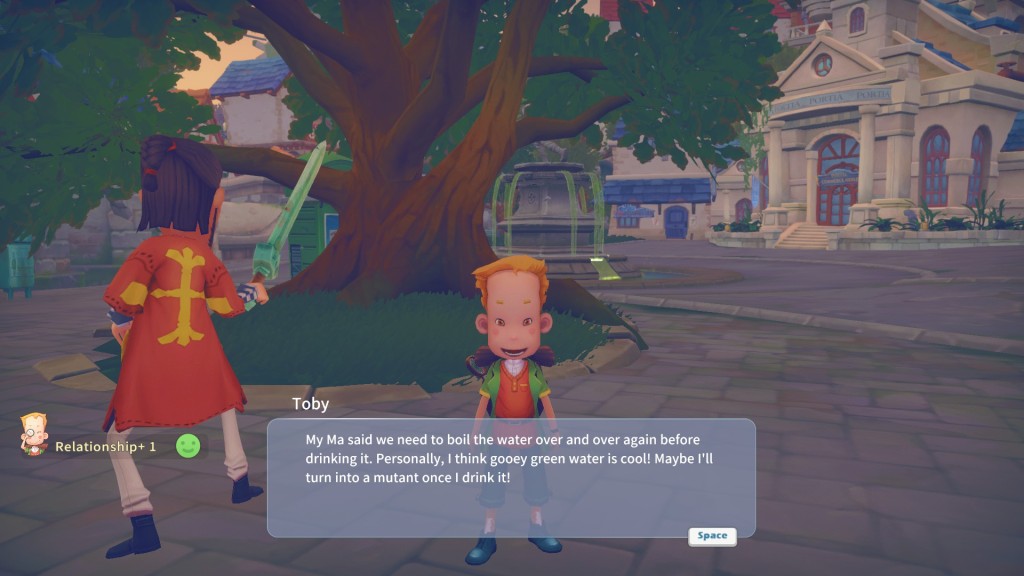
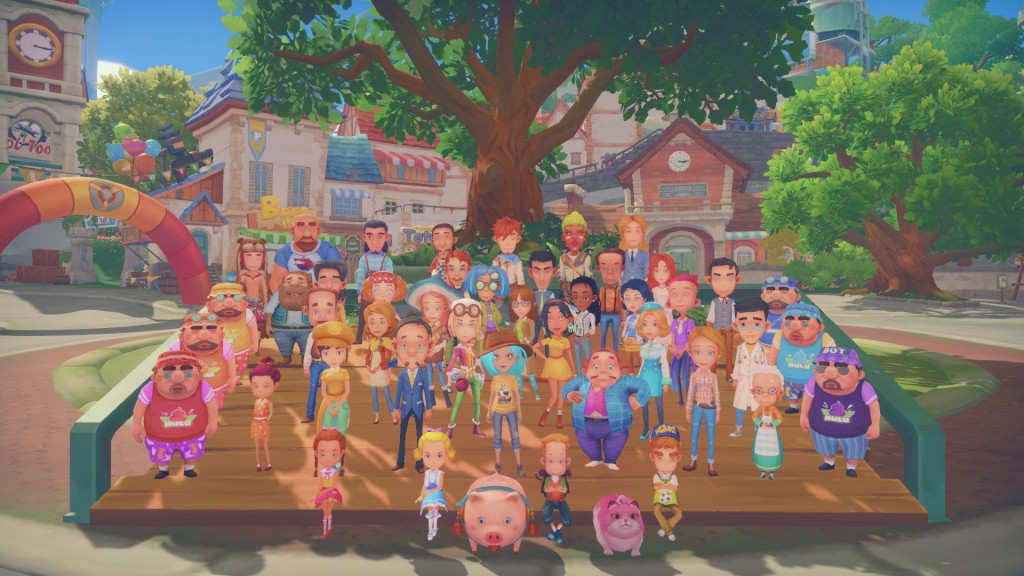
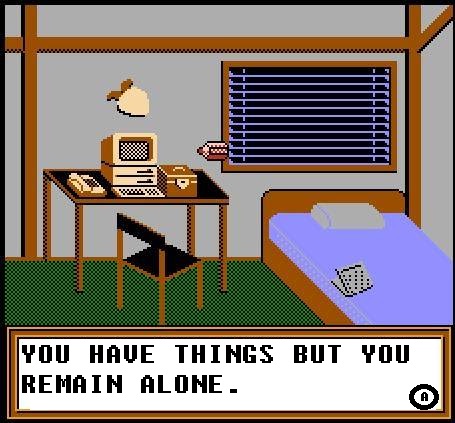


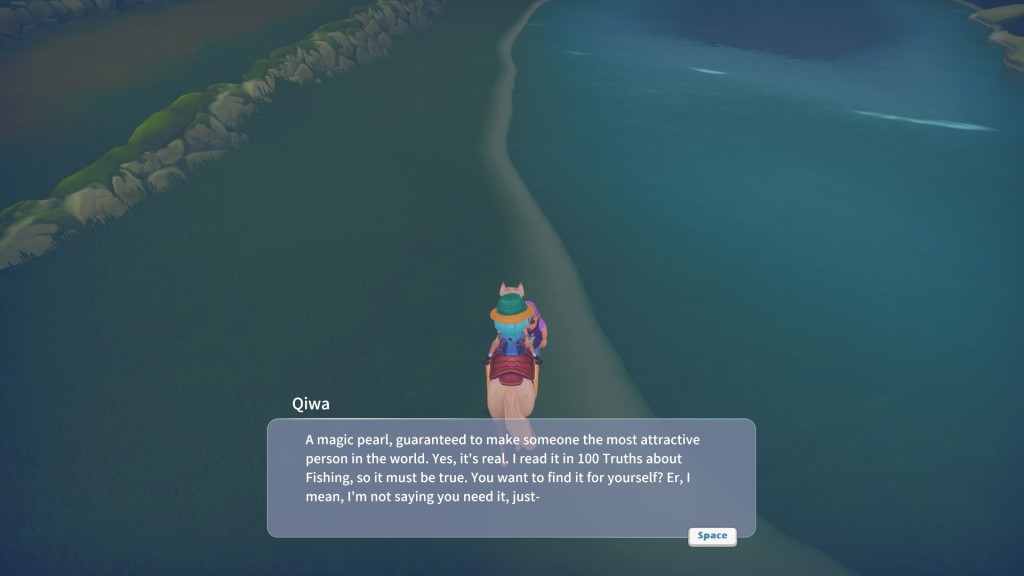

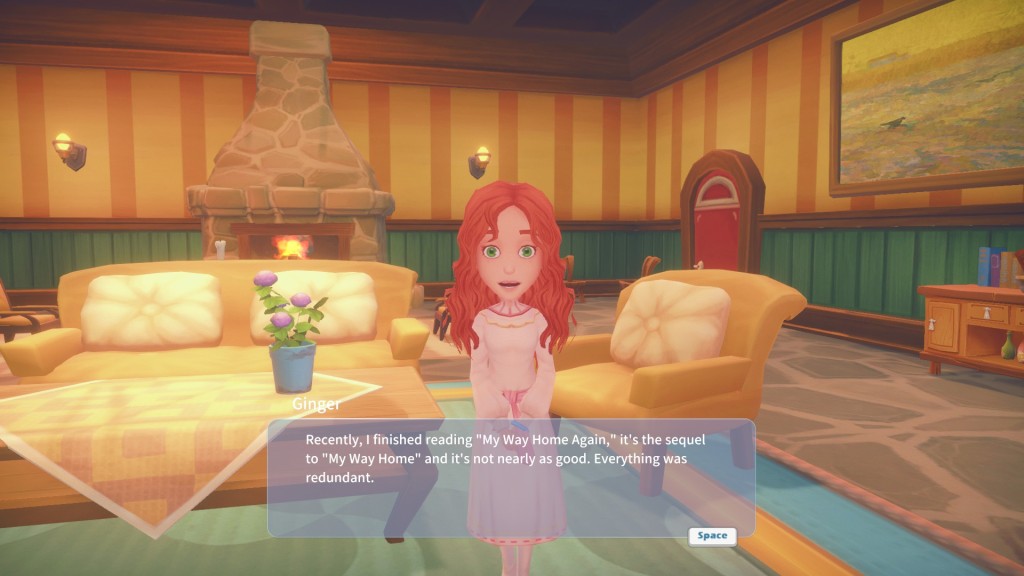
I’ve always seen this game recommended in my Steam store. The cute anime girl aspect is a must for me when it comes to games like this, and the character design here is probably a dealbreaker (if that makes me too shallow then so be it, that’s fine.) But I can appreciate allowing for same-sex relationships as well when those aren’t featured in Rune Factory or Harvest Moon, etc. Would be nice to see in Rune Factory 5, but I don’t think anyone’s expecting it.
LikeLike
From what I hear, definitely not for RF5. Might get the system from RF4 where you can kinda cheat it by using the female MC model, sprite, etc., as the male character (and vice versa), but that’s it.
I do hear that the new Story of Seasons game WILL allow same-sex marriage, which would be a nice change.
LikeLiked by 1 person
I have almost exactly the same time played as you – 69 hours in fact – and I have never romanced anyone (except for that one date you have to go on for the main storyline). I also rarely bothered with any of the gift-giving or other character-NPC interactions, except when it’s unavoidable in order to open some specific content, which is rare.
I think it’s an extremely well-designed game in that you can pretty much play it how you like and you still progress at an enjoyable rate. You can do the building missions or not, you can follow the story or not, you can engage in relationships or not, you can explore or not, you can dungeon-run or not… I mostly mined and chopped wood and killed creatures to make money and upgrade my house. When I stopped playing I’d just opened the big bridge that allows you to access the large desert area. I really should get back to Portia and see what happens over there.
As for the graphics, I thought it was an absolutely gorgeous world. I took countless screenshots and had them as a slideshow on my desktop for a while, until I replaced them with Genshin Impact. The sound, though, I can’t actually remember. I don’t think it made much of an impression either way.
LikeLike
I really should have mentioned this in the review, but the art design is great. While the models and textures might be low-res, the game makes great use of them. I never felt this was an ugly game (some ugly characters, sure, but that’s intentional), or “bad grafixs”; quite the contrary, it looks quite nice.
LikeLike